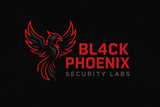Unlocking Full-Disk Encryption on TerraMaster NAS

In an era where personal and business data increasingly resides on networked storage devices, the importance of robust security measures cannot be overstated. While many enterprise-grade solutions offer comprehensive data protection, consumer-oriented Network Attached Storage (NAS) devices sometimes present a different challenge. One recent observation in the tech community highlighted a pertinent case with TerraMaster NAS systems, specifically concerning the implementation of full-disk encryption.
The initial discovery revolved around the default configuration of TerraMaster's TOS 5.x operating system, which notably lacks a built-in option for full-disk encryption. For users accustomed to a higher standard of data security, this omission can be a significant concern. Data stored on a NAS, whether family photos, critical backups, or sensitive business documents, is vulnerable if the physical device falls into the wrong hands. Without encryption, a simple drive extraction could compromise all data.
Unlocking Advanced Security via SSH
However, the ingenuity of the tech community often finds ways to bridge such gaps. It was demonstrated that, despite the absence of an official graphical interface option, it is entirely feasible to implement full-disk encryption on TerraMaster NAS devices by leveraging SSH access and the underlying Linux operating system. The process involves utilizing LUKS (Linux Unified Key Setup), a powerful standard for disk encryption that provides a robust layer of protection.
The method essentially involves creating encrypted volumes over the physical disks or RAID arrays through the command line. This allows users to secure their data with strong cryptographic algorithms, ensuring that the information remains unintelligible without the correct passphrase. For Bl4ckPhoenix Security Labs, this highlights a critical point: the true capabilities of a device often extend beyond its vendor-provided interface, especially when built upon open-source foundations like Linux.
The "Invisible RAID" Phenomenon: A Security Feature in Disguise?
Interestingly, the implementation of LUKS encryption led to an "unexpected," albeit understandable, outcome. After successfully encrypting the RAID array, users reported that the TerraMaster WebUI—the graphical management interface—could no longer "see" the encrypted volumes. Instead, it presented the drives as uninitialized or even completely missing.
At first glance, this might appear to be a problem, suggesting a breakdown in the system's ability to recognize its own storage. However, upon deeper analysis, this behavior is a testament to the effectiveness of full-disk encryption. LUKS operates at a low level, encrypting the entire disk or partition. When the operating system (or in this case, the TOS WebUI) attempts to read the disk without the decryption key, it only encounters encrypted gibberish. From the perspective of a higher-level management interface that expects a conventional, unencrypted filesystem, the disk appears unformatted or inaccessible.
This "invisibility" is, in fact, a crucial security feature. If the WebUI could bypass the LUKS encryption and see the underlying filesystem, it would undermine the very purpose of full-disk encryption. It underscores that the data is truly protected, even from the device's own management software if it doesn't possess the decryption key. The challenge for the user then shifts from "how to encrypt" to "how to manage an encrypted system when the default tools are unaware of the encryption layer."
Implications for Data Sovereignty and Security Posture
The experience with TerraMaster NAS and LUKS offers several thought-provoking insights:
- Vendor Responsibility: It raises questions about why fundamental security features like full-disk encryption are not standard or easily configurable on consumer NAS devices, especially given their role as central data hubs.
- The Power of SSH and Linux: It reaffirms the immense power and flexibility that SSH access and a Linux-based operating system provide. For technically proficient users, this allows for customization and security enhancements far beyond the manufacturer's intended scope.
- Understanding Layers of Abstraction: The "invisible RAID" scenario beautifully illustrates the concept of different layers of abstraction in computing. The WebUI operates at a higher layer, expecting a decrypted view, while LUKS operates at a lower, hardware-agnostic layer, ensuring data privacy regardless of the system's higher-level interpretations.
- User Empowerment: For those willing to delve into the command line, this workaround provides a path to achieve a higher level of data security and control over their storage infrastructure.
For individuals and organizations considering NAS solutions, this scenario serves as a valuable reminder. While convenience and ease of use are paramount, a thorough understanding of a device's security capabilities—and its limitations—is essential. The ability to implement robust encryption independently, even if it means navigating a less-than-ideal user interface experience, is a testament to the ongoing need for proactive cybersecurity measures and an understanding of the underlying systems. Bl4ckPhoenix Security Labs encourages users to always explore the full potential of their hardware, especially when it pertains to securing their most valuable digital assets.




